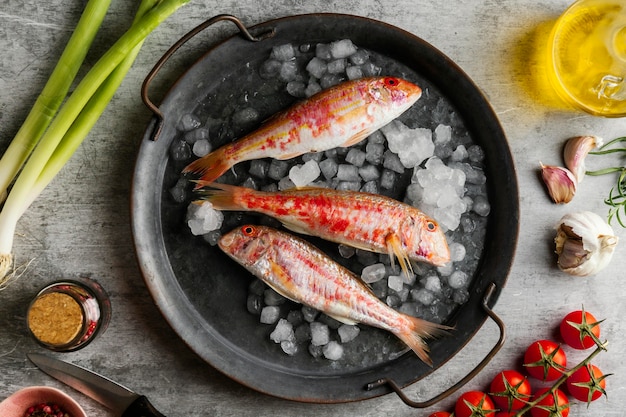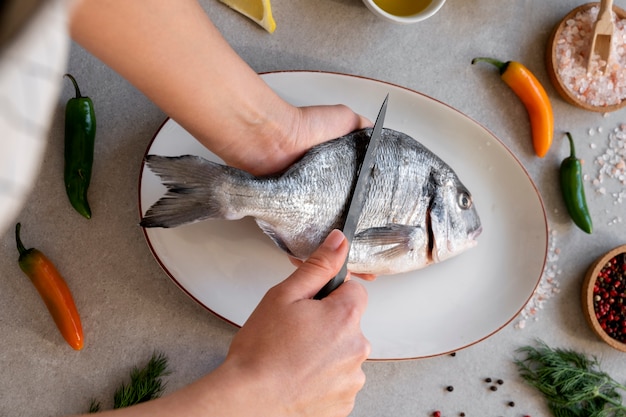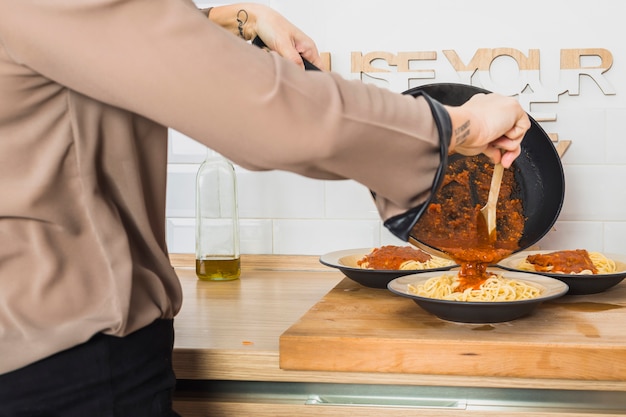Oh, mahi mahi. The name alone conjures up images of sun-kissed beaches and turquoise waters, doesn't it? But for me, it’s all about the flavour, that delicate sweetness, and the way it flakes apart with the slightest nudge. It's no wonder this fish has become a favourite in our house. And while I've experimented with all sorts of recipes, nothing beats a simple, pan-fried mahi mahi for pure, unadulterated deliciousness. It's quick, it's easy, and with a few key tips, you can achieve restaurant-quality results in your own kitchen.
But, let's be honest, cooking fish can be a little nerve-wracking, especially when you want to avoid that dreaded dry, rubbery texture. I've been there, and trust me, it's not a pleasant experience. So, I'm here to share the secrets I've learned over the years, to make sure your mahi mahi turns out perfect every time. We'll go through everything, from choosing the right fish to mastering the pan-frying technique and adding those finishing touches that truly elevate the dish.
Part 1: The Importance of Selecting the Right Mahi Mahi

Finding Freshness
The first step in creating a delicious pan-fried mahi mahi is choosing the right fish. Freshness is paramount, folks. There's nothing quite like the taste of freshly caught mahi mahi, and it makes a world of difference in the final dish. Here's what to look for when you're at the fish counter:
- Firm and Bright: A good mahi mahi fillet should be firm to the touch, not mushy or flabby. The surface should be bright, glossy, and free from any dull patches.
- Avoid the Slimy Stuff: A slimy texture is a sign that the fish is starting to spoil.
- Fresh Fish Smell: The smell is a big indicator. A freshly caught mahi mahi will have a mild, fresh, ocean-like scent. If you detect a strong, fishy, or ammonia-like odour, it's best to steer clear.
Of course, sometimes finding fresh mahi mahi can be a challenge. Don't worry, frozen mahi mahi can be just as good, as long as you handle it right. I always recommend thawing it in the fridge overnight, allowing it to defrost gently and avoid sudden temperature changes. The goal is to preserve the texture and moisture of the fish, so it cooks up beautifully.
Size and Thickness Matters
The size and thickness of your fillets will affect the cooking time and how you approach the pan-frying. Thinner fillets cook quickly, making them perfect for a quick weeknight dinner. Thicker fillets might need a little more time, and you might even consider grilling or baking them for a more even cook.
Don't hesitate to ask the fishmonger for guidance. They're the experts, and they can tell you which fillets are freshest, how to cook them best, and even offer some delicious recipe ideas. They're a wealth of knowledge, folks, so take advantage of it!
Part 2: Assembling Your Pan-Frying Arsenal

The Perfect Pan
Now, let's talk about the tools of the trade. You'll need a good, reliable pan that can handle high heat and distribute it evenly. My go-to is a cast iron pan. It heats up beautifully, retains heat well, and gives you that lovely, crispy crust you crave. But a stainless steel pan will do the trick if you don't have a cast iron pan.
Before you get started, make sure the pan is clean and dry. You want that gorgeous mahi mahi to be the star of the show, not some leftover bits from last night's dinner clinging to the bottom of the pan!
Oil is Your Friend
Next up, the oil. A good quality olive oil is my favourite, but feel free to experiment with other options. Just make sure the oil has a high smoke point, such as avocado oil or grapeseed oil. You want to heat the oil without it smoking, which can affect the flavour of your fish.
You'll need enough oil to cover the bottom of the pan, but not so much that the mahi mahi is swimming in it. You want to create a nice, even layer of oil that will help the fillets cook evenly and achieve that beautiful golden brown crust.
Part 3: The Art of Pan-Frying Mahi Mahi

Prepping for Success
You've got your ingredients, your pan is ready, and the oil is shimmering – it's time to get those fillets ready for their starring role!
- Pat Dry: Start by patting the fillets dry with paper towels. This is crucial to prevent sticking and ensures that lovely crispy exterior.
- Seasoning is Key: Next, season them with salt and pepper. A simple combination, but it allows the delicate flavour of the mahi mahi to shine through. Don't be afraid to experiment with other herbs and spices, like lemon zest, fresh dill, or even a pinch of red pepper flakes.
Heating the Pan: The Crucial First Step
Now, heat your pan over medium-high heat. You want the oil to be shimmering, but not smoking. There's a little trick to test if the pan is hot enough. Drop a drop of water into the oil. If it sizzles and evaporates immediately, you're good to go.
Cooking Time: A Balancing Act
When the oil is hot and shimmering, carefully place your mahi mahi fillets in the pan. Don't crowd the pan; you want to give each fillet enough space to cook evenly. Cook for about 3-4 minutes per side, or until the fillets turn a beautiful golden brown and are cooked through.
Don't worry, you'll know when it's done. Look for a white line along the edge of the fillet, indicating it's cooked through. You can also gently poke it with a fork; it should be firm to the touch, not soft or jiggly. For the adventurous, you can always use a meat thermometer, but honestly, you'll get a feel for it after a few tries.
Rest and Recover
Once your mahi mahi is cooked to perfection, remove it from the pan and place it on a plate lined with paper towels to absorb any excess oil. Let it rest for a few minutes before serving. This resting time allows the juices to redistribute, resulting in a more tender, succulent piece of fish.
Part 4: Flipping the Fillets: A Gentle Approach
Now, here's the trickiest part, flipping those fillets. You don't want to break them, do you?
My favourite tool is a spatula with thin edges. Gently slide it underneath the fillet and carefully lift it. If it feels stuck, give it a gentle wiggle, but don't force it. Once the fillet is loose, carefully flip it over. If you're feeling adventurous, you can try using tongs, but be extra careful not to crush the fish.
Part 5: Timing is Everything: Perfect Cooking Times for Mahi Mahi
Cooking Time Guide
The ideal cooking time depends on the thickness of your mahi mahi fillets. Here's a handy guide to keep in mind:
| Fillet Thickness | Cooking Time Per Side |
|---|---|
| Thin (1/2 inch or less) | 3-4 minutes |
| Medium (1/2-1 inch) | 4-5 minutes |
| Thick (over 1 inch) | 5-6 minutes |
But remember, these are just guidelines. The best way to know if your mahi mahi is cooked is to check for those signs of doneness we discussed earlier.
Signs of a Perfectly Cooked Mahi Mahi
Here's a little cheat sheet to make sure your mahi mahi is just right:
- Colour Change: The mahi mahi should have a beautiful golden brown colour on the outside.
- White Line: You should see a white line along the edge of the fillet, indicating it's cooked through.
- Firm Texture: When you gently poke the fillet with a fork, it should be firm to the touch, not soft or jiggly.
- internal temperature: If you're a stickler for precision, you can use a meat thermometer. It should reach 145°F (63°C) for safe consumption.
Once your mahi mahi meets these criteria, you're ready to enjoy a truly delicious meal!
Part 6: Taking Your Mahi Mahi to the Next Level: Flavour-Boosting Techniques
Herbs and Spices: A Symphony of Flavours
Mahi mahi is a blank canvas, ready for your culinary creativity. It's a delicate fish, so we want to enhance its natural sweetness without overpowering it. A squeeze of fresh lemon juice, a sprinkle of fresh herbs, or a pinch of chili flakes can transform the dish.
Some of my favourite flavour combinations include:
- Lemon and Dill: This classic combo adds a fresh, bright flavour that complements the mahi mahi perfectly.
- Caribbean Jerk: For a taste of the tropics, try a blend of jerk seasoning, which typically includes a mix of allspice, thyme, Scotch bonnet peppers, and other spices.
- Cajun: If you like a little heat, Cajun seasoning, with its blend of paprika, cayenne, garlic powder, and other spices, will give your mahi mahi a kick.
Remember, taste your mahi mahi before adding any seasonings. You don't want to overpower its delicate flavour.
Glazes and Sauces: Adding a Touch of Luxury
For a touch of luxury and an extra layer of flavour, try adding a glaze or sauce to your mahi mahi. These can be simple or elaborate, depending on your taste and the occasion.
- Balsamic Glaze: This classic glaze adds a touch of sweetness and tanginess, perfectly complementing the mahi mahi.
- Creamy Lemon Sauce: A creamy lemon sauce brightens up the flavour of the fish and adds a touch of richness.
- Mango Salsa: For a tropical twist, try a vibrant mango salsa, which adds sweetness and a touch of spice to the dish.
Finishing Touches: The Little Details That Make a Big Difference
For a final flourish, sprinkle some chopped fresh herbs over your mahi mahi just before serving. Fresh cilantro, parsley, dill, or even basil can elevate the dish to new heights.
You can also add a dollop of sour cream or crème fraiche for a creamy, tangy touch, or sprinkle on some toasted sesame seeds for a nutty crunch.
Part 7: side dishes to Compliment Your Mahi Mahi Masterpiece
Now, let's talk about side dishes. You want something that complements your perfectly pan-fried mahi mahi without stealing the spotlight.
- Light and Fresh: A simple salad with a vinaigrette dressing or a side of roasted vegetables are always excellent choices. They offer a refreshing contrast to the rich, flaky fish.
- Carb-licious: A fluffy rice pilaf, quinoa salad, or even a baked potato can add a comforting element to the meal.
- Tropical Twist: For a taste of the tropics, try serving your mahi mahi with a side of mango salsa or a pineapple salad.
You can even get creative and combine different options, like a salad with a side of quinoa and a sprinkle of toasted nuts. The possibilities are endless!
Part 8: Expanding Your Horizons: Other Cooking Methods for Mahi Mahi
While pan-frying is our focus, there are other ways to cook mahi mahi that deserve a shout-out.
Grilling: Embrace the Smoky Flavour
If you have a grill, you can try grilling your mahi mahi for a smoky flavour that's simply irresistible. Just make sure your grill is nice and hot, and use a grill pan or skewers to prevent the fillets from falling through the grates.
Baking: Simple and Convenient
Another easy option is baking. Preheat your oven to 400°F (200°C), place your fillets on a baking sheet lined with parchment paper, and bake for about 10-12 minutes, or until cooked through. This method is great for a hassle-free dinner.
Roasting: A Hearty and Flavorful Meal
For a heartier meal, try roasting your mahi mahi with vegetables. Place the fillets on a baking sheet with your favourite vegetables, drizzle with olive oil, and season with salt and pepper. Roast for about 20-25 minutes, or until the mahi mahi is cooked through and the vegetables are tender. This is a one-pan wonder that's perfect for a crowd.
Part 9: Frequently Asked Questions (FAQs)
1. Can I Reuse the Oil After Cooking Mahi Mahi?
It's best to avoid reusing the oil after cooking fish, as it can absorb flavours and smells that might not be desirable in other dishes.
2. Can I Freeze Cooked Mahi Mahi?
Yes, you can freeze cooked mahi mahi. It's best to freeze it in a freezer-safe container or wrap it tightly in plastic wrap. You can freeze it for up to 3 months.
3. How Do I Know if Mahi Mahi is Bad?
Here are the signs to watch for:
- Colour: Fresh mahi mahi has a bright, glossy surface. If it's dull or discoloured, it might be spoiled.
- Texture: The flesh should be firm to the touch. If it's slimy or mushy, it's likely gone bad.
- Smell: Fresh mahi mahi should have a mild, fresh, ocean-like smell. If it has a strong, fishy, or ammonia-like smell, it's spoiled.
4. What are Some Good Substitutes for Mahi Mahi?
If you can't find mahi mahi, you can use other similar fish, like swordfish, tuna, or halibut. They have a similar texture and flavour, and you can use them in the same recipes.
5. What are Some Ways to Prevent Mahi Mahi from Sticking to the Pan?
Here are a few helpful tips:
- Pat it Dry: Make sure the fillets are completely dry before placing them in the pan.
- Use a Good Pan: A well-seasoned cast iron pan or a nonstick pan will help prevent sticking.
- Don't Overcrowd the Pan: Give the fillets enough space to cook evenly.
And there you have it, a comprehensive guide to cooking mahi mahi on the stove. Now go forth, put your newfound skills to the test, and enjoy a truly delicious meal!
Everyone is watching

Prime Rib Roast Cooking Time Chart: Per Pound Guide
Cooking TipsPrime rib roast. Just the name conjures images of lavish dinners, crackling fires, and hearty laughter. It’s ...

How Long to Bake Potatoes in the Oven (Perfect Every Time)
Cooking TipsBaked potatoes are a staple in my kitchen. They're incredibly versatile, delicious, and surprisingly easy to m...

Perfect Rice Every Time: The Ultimate Guide to Cooking Rice
Cooking TipsAs a self-proclaimed foodie, I've always been a bit obsessed with rice. It's the foundation of countless cuisi...

The Ultimate Guide to Cooking Asparagus: Tips, Techniques, and Recipes
Cooking TipsAsparagus. The mere mention of this spring delicacy conjures up images of vibrant green spears, crisp and burs...

Ultimate Guide to Cooking the Perfect Thanksgiving Turkey
Cooking TipsThanksgiving. Just the word conjures up images of overflowing tables laden with delicious food, the scent of r...
